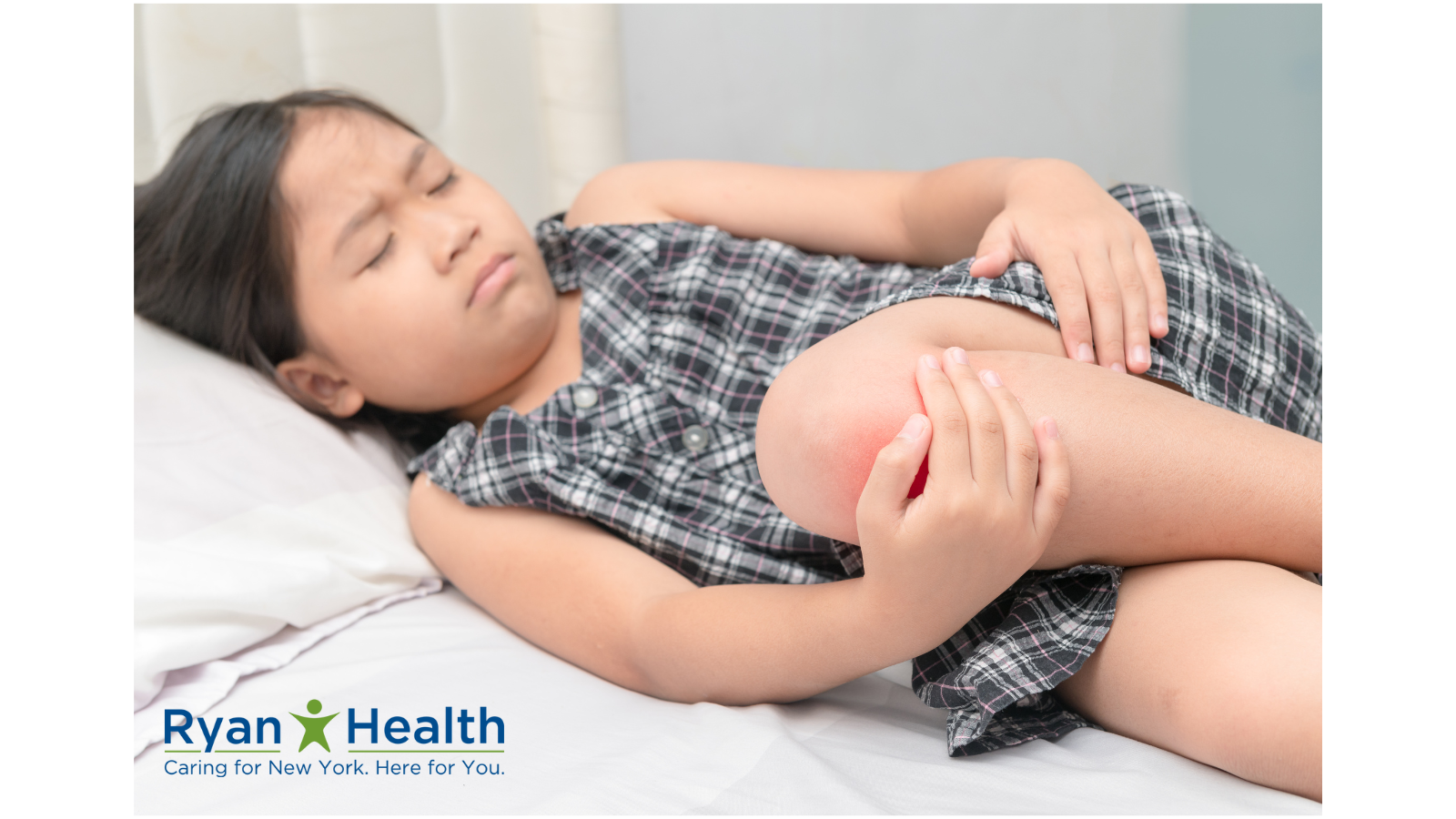News | Announcement
Is your child experiencing joint pain? What to know about Juvenile Arthritis and Lupus

300,000 kids aged 16 and under in the US have juvenile arthritis, according to the Arthritis Foundation. There is no cure for it, and the exact causes of it are unknown.
Juvenile Arthritis
Juvenile arthritis is an autoimmune disorder that causes joint pain and swelling, explains Cynthia Salvant, MD, MS, a dedicated pediatric rheumatologist at Ryan Health | Women and Children’s. “There is no formal definition, but a sign is joint swelling for six weeks or more. Parents will recognize something is wrong. Their child may be limping, or not moving correctly, and in pain.”
Interestingly, juvenile arthritis affects more girls than boys. It is not caused by an injury, and genetics plays only a minor role. With no cure available, those affected are either managing active symptoms or having periods of remission.
Medication is the best treatment for juvenile arthritis, but physical therapy and diet are also important. The Arthritis Foundation recommends balancing exercise with low impact activities like walking and swimming, and rest to give the joints a break. Staying up to date on vaccinations is also key, but clinicians can provide the best guidance since some medications weaken the immune system. Over time, juvenile arthritis can cause serious complications like anemia, permanent joint damage, decreased growth, and disproportionate limbs. It also can cause eye problems, such as blurred vision, increased sensitivity to light, and constant pain.
Juvenile arthritis, like other autoimmune diseases, is often challenging to diagnose or to determine the cause. Rheumatologists study these autoimmune diseases that impact joints, muscles, and bones. According to the American College of Rheumatology, they cause pain, swelling, and stiffness.
“We’re like Dr. House on that old TV show,” Dr. Salvant says. “Other pediatricians refer patients to us when they can’t figure out the problem.”
According to the American College of Rheumatology, there are only 350 pediatric rheumatologists in the US. They are trained in pediatrics as well as the specialty of rheumatology. Dr. Salvant is one of only a handful of pediatric rheumatologists in the New York City area.
Lupus
“While joint pain like juvenile arthritis is the most common autoimmune condition we diagnose, lupus is also something we see a lot of,” Dr. Salvant says. Lupus is a multi-organ autoimmune disease that can attack your organs—heart, lungs, skin, and hair.
“Lupus is hard to diagnose because there can be a mixed bag of symptoms, like fatigue or hair loss,” she continued. “Until you test, you do not know. Without proper testing and treatment, it poses serious risks. Much like juvenile arthritis, lupus affects females and has no cure, but early and aggressive treatment can be crucial for managing the disease. Treatment can include chemotherapy or steroids. The goal is to get lupus under control in the first six months.
“Lupus, juvenile arthritis, and other autoimmune diseases are complex, chronic diseases, especially for children,” Dr. Salvant says. “They are generally rare, although they’re common enough that specialists like me are necessary to ensure proper diagnosis and care are given.”
Remember, early recognition and medical intervention can make a significant difference. If you notice persistent joint pain or swelling in your child, speak to your pediatrician and ask if it might be time to consult a pediatric rheumatologist.
———
The Arthritis Foundation lists these symptoms and health effects of:
- Joints: This condition may cause joints to look red or swollen and feel stiff, painful, tender, and warm. It can make it difficult to move or complete everyday tasks. Joint symptoms may worsen after waking up or staying in one position too long.
- Skin: Skin symptoms may include a scaly red rash (psoriatic), lightly spotted pink rash (systemic), a butterfly-shaped rash across the bridge of the nose and cheeks (lupus), or thick, hardened patches of skin (scleroderma).
- Eyes: Dryness, pain, redness, sensitivity to light, and trouble seeing properly caused by uveitis (chronic eye inflammation).
- Internal organs: It can affect internal organs such as the digestive tract (diarrhea and bloating), lungs (shortness of breath), and heart.
Other symptoms include fatigue (feeling extremely tired or rundown), appetite loss, and high, spiking fever.